The War of Independence 1919 to 1921
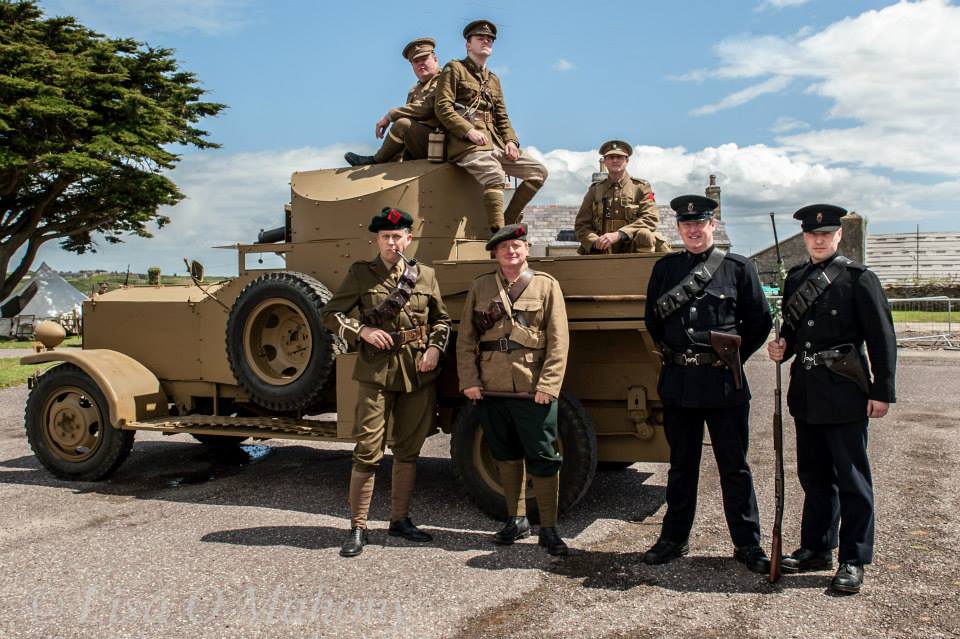
Start of the War of Independence
- In the 1918 election there was a landslide victory for Sinn Fein (who refused to take their seats in Westminster). Sinn Fein was pretty much united in its views in 1918. Contrast the 1922 election, when Sinn Fein split into pro and anti-treaty camps, and other parties also had significant representation in the new parliament (Dail Eireann). Photo above right: Irish re-enactors, as Auxies, regular British army and RIC (police). None are "black and tans"!
- Sinn Fein set up an alternative “Irish” parliament (Dail Eireann) as they were not going to go to London.
- January 1919 – Soloheadbeg quarry ambush of police guarding a shipment of explosives in which two RIC officers were killed by the rebels, now styled as the IRA: this was the start of the War of Independence. This incident took place in the West of Ireland in County Tipperary. Much of the war of Independence took place in the South West of Ireland and in Dublin. It would be a mistake to think that Ireland was in flames from one end to the other.
- Macready was appointed as army chief; Tudor was appointed as police chief
Macready had been in Ireland before WWI and knew the situation well. (His father was Irish). He was highly regarded in the army.
- Who were the government forces?
Due to a shortage of soldiers in the army and calls from far flung parts of the empire for the army to quash local opposition, the British government recruited auxiliary police units. These were the RIC Special Reserve (RICSR) aka “Black and Tans”, who only operated with the RIC, the Auxiliary Division RIC (ADRIC) “Auxies” a freestanding unit that operated independently, the army, RIC, and shadowy government intelligence and assassination gangs. The records for the ADRIC are poor and there do not appear to be any records of the intelligence and assassination units. (Photo right: a "jolly" group from a Christmas card of the era. From left, they are regular RIC (regular police), RICSR (Black and Tans), ADRIC (Auxies") and Veterans and Drivers Divn, about whom not a lot is known).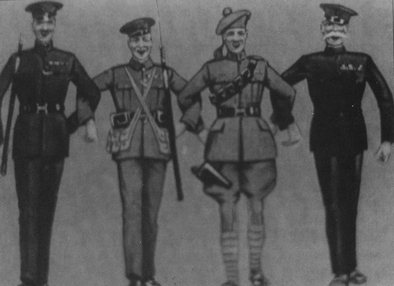
- Lloyd George approved Tudor’s “shoot to kill” policy
This major blot on Lloyd George’s record, and indeed his whole involvement in Ireland, is often conveniently overlooked by his chroniclers. It was a major misreading of a situation which he never seemed to grasp. Ultimately, his failure to deploy British police and/or increase the strength of the army, and to properly to control the reserve police units led to a bad situation becoming much worse, especially for the ordinary citizen.
- Government of Ireland Act 1920 – two proposed parliaments for Ireland, North and South
The southern one did not come about (and the Dail only became “official” after the Treaty ending the War of Independence in September 1922 when it was really only used to vote on, and implement, the Treaty). However, the northern parliament was established, and was opened on 22nd June 1921 by King George.
Michael Collins’ tactics
- Learned from the errors of the 1916 Rising
In essence, being holed up in a series of buildings which have little strategic value was pointless and could only be a disaster. Rather than that, Collins sought to use a guerrilla war against the civil and military authorities in Ireland, which of course including a lot of Irish people. A key aim was to detach the police and courts from the population. In reality, this was only likely to be successful in rural areas where the Crown forces would be more thinly spread.
- Attacks on the police: first stage of the civil war
In effect, these were attacks by one group of Irish people in the IRA on another group of Irish people who were the police. These differences were maintained into the civil war where the more hardline anti-Treaty elements were on one side, and the more moderate pro-Treaty elements who wanted an end to strife were on the other. (Photo right: Michael Collins).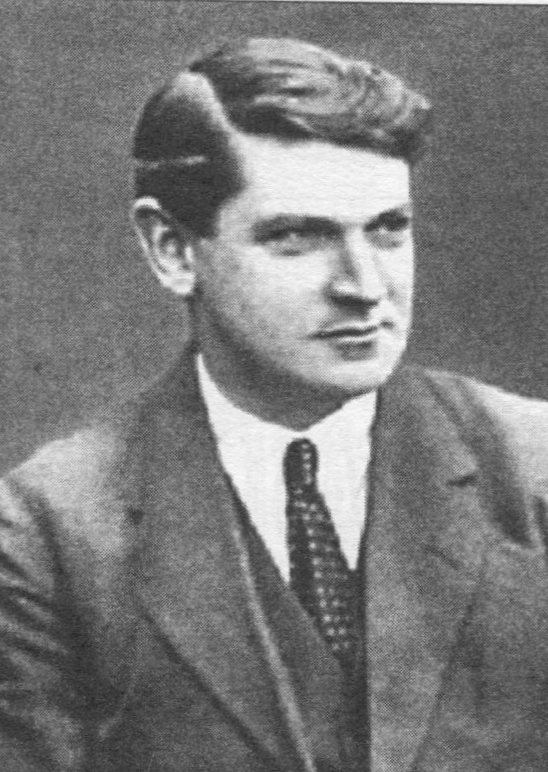
- Intimidate jurors and disrupt courts
Jurors being civilians doing their civic duty are the easiest link in the judicial system to disrupt, especially in rural areas such as the South West of Ireland where locals would know each other’s business, such as who had been called for jury service. Sinn Fein set up alternative courts to administer justice. Some of the court officials were from the women’s republican associations. There is a scene in the film “The Wind that Shakes the Barley” where such a court is portrayed.
The disruption of the courts also meant that those attacking the populace and the police could not be brought to justice. The lack of legal redress for the killings of their comrades led the police to carry out retaliatory actions, which were often indiscriminate and often only harmed the local populace. Such actions were, in popular mythology, ascribed to the Black and Tans but they only operated in conjunction with the regular RIC, from whom in effect they learned their bad habits. (The Black and Tans never operated in Dublin but the Auxies did, and many outrages ascribed to the Black and Tans were in fact down to the Auxies).
- Urban and rural guerrilla warfare
Michael Collins’ tactic was to intimidate individual members of the RIC and their families, to restrict the activities of the police by attacks on them and their police stations. He was trying to detach the forces of law and order from the civilian population. His initial focus was on the G divn of the RIC, that is the special branch. Armed attacks on the police were prevalent in the South and West of Ireland, and in Dublin. The police retreated from large parts of rural SW Ireland.
- Intelligence-gathering operations
Collins had sympathisers within the administration in Dublin Castle, the RIC and the post office. Some of this was voluntary and some may well have been under duress. At least during the first phases of the War of Independence, Collins had good prior knowledge of the moves to be made by the Crown forces. This diminished as the war progressed as some of his sympathisers were uncovered and the British intelligence services trusted the RIC less with information. The success of the British intelligence led to Collins’ assassins taking action against purported British intelligence officers in Dublin – Bloody Sunday.
Consequences
- Bloody Sunday – 21st April 1920
British Intelligence officers were killed: twelve officers killed, one of whom was not part of the intelligence network at all. Jocelyn Hardy escaped as he was not at his digs when the IRA squad arrived. It is important to realise that the officers were all living in lodgings or hotels in Dublin, not in army accommodation. Dublin was not “on fire” from one end to the other, so such accommodation was feasible, at least until the events of Bloody Sunday.
Retaliation was carried out, primarily by Auxies: twelve civilians including a woman, a child and a player killed at a Gaelic football match at Croke Park, Dublin the same day, 21st April; later that evening, three prisoners are killed by Auxies in Dublin Castle. (Photo below right: a British army tank being used to break into a building in Dublin - remember this is the centre of a British city!)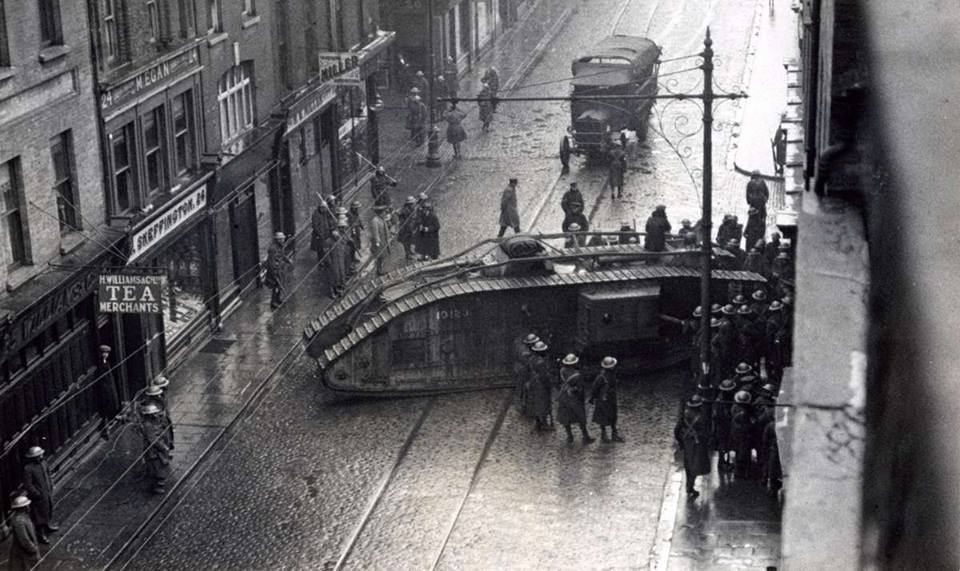
- Kilmichael 28th November 1920: an ambush of an Auxiliary patrol was carried out by the IRA at Kilmichael in County Cork, in which all 16 Auxies are killed. This is an event shrouded in controversy as it is believed that some of the Auxies were shot whilst wounded or as prisoners. This incident is indicative of the type of the rural campaign taking place in South West Ireland.
- Counter insurgency methods – cf Boer War
Methods that were used in the Boer War were being seriously considered before the ceasefire in July 1921. These would have included clearing areas of civilian population and corralling them in camps, typically in the South and West of Ireland.
- De Valera and Collins were now the key figures
De Valera was the last of the Rising “big names” still alive and in action. Collins had made his name by taking over and leading much of the intelligence efforts of the IRA, as it now was. Collins sobriquet the “Big Man” is said to emanate from his arrogant attitude and was originally intended sarcastically.
- British government lost Irish hearts and minds
The effects of the retaliation and outrages typically laid at the door of the Auxies but which also involved RIC and Black and Tans turned Irish hearts and minds against the British regime, typically those of southern Catholics. Indeed, there was much criticism of the tactics in both the British and American newspapers.
It is worth recording that the IRA, especially in the South West, killed a lot of Irish people either because they would not support them or were suspected of being pro-British (often Protestants) or were simply “suspicious” persons, such as itinerant tinkers. Something like 150 bodies were found in and around County Cork in the War of Independence but goodness knows how many people were actually killed. Irish WWI veterans were also a target if they refused to help the rebels. The ordinary person was thus caught between the violence of the IRA and the violence of the Crown forces, often the Auxies. (Photo below right: a group of Auxies in central Dublin in 1921. Note the lack of a common uniform apart from the Glengarry beret).
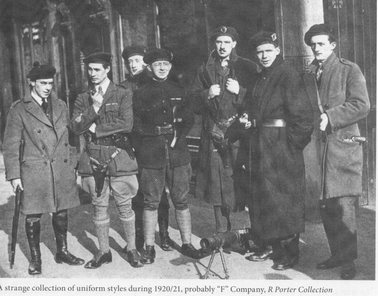
- Increasing problems around Dublin and in the South and West of Ireland
During the War of Independence, the violence was largely focussed in the Cork and Kerry areas in SW Ireland, and in Dublin. (Belfast, as ever, had different issues.) For example, Sir Henry Wilson, the Chief of the Imperial General Staff of the British army, in 1920 travelled in an open car in full uniform, from Dublin to his family’s estates in Currigrane, County Longford.
- Hunger strike of Terence MacSwiney
MacSwiney succeeded Tomas MacCurtain as Lord Mayor of Cork and commandant of the local IRA, after MacCurtain had been killed in his home by police in March 1920. MacSwiney was arrested in Cork City Hal in August 1920, convicted by court martial and imprisoned in Brixton prison in London. He went on hunger strike and died in October 1920. This attracted a lot of publicity especially in North America. (There were other hunger strike deaths in Ireland but it was Macswiney who was by far the most famous). His funeral was a major event in Cork and the whole event was undoubtedly a major publicity blow to the British government. There are memorials to him in Cork city and a school named after him, which one of us (Denis) attended. (Photo below: the lying in state of Terence MacSwiney in Southwark cathedral, London).
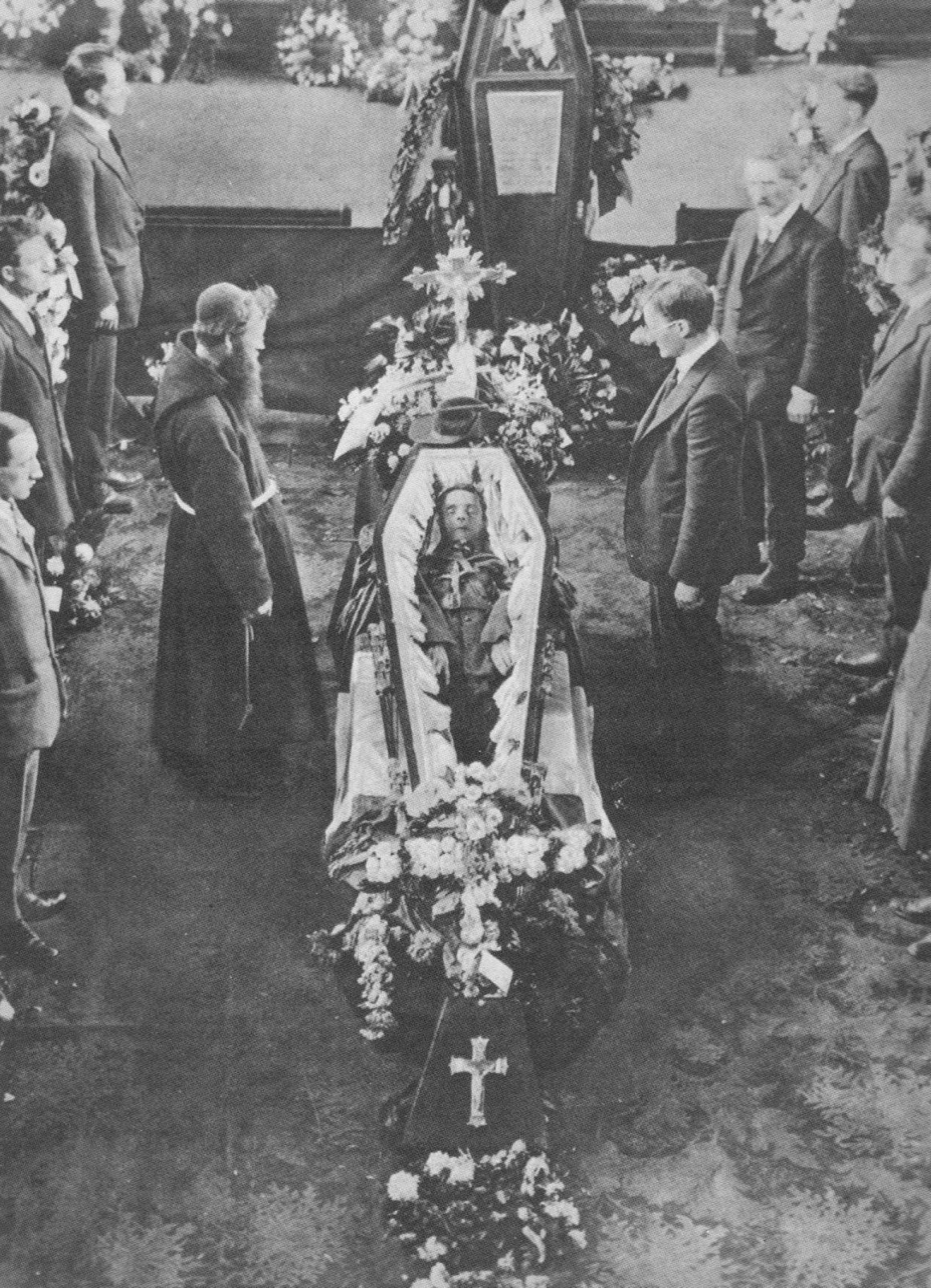 The next section is here
The next section is here